New Orleans, Mon Amour
Images of a great American city
These photographs were taken in early February. I traveled throughout New Orleans and spent some time with people in the Common Ground Collective, a community-initiated volunteer group that was formed in the Algiers neighborhood the first week after Hurricane Katrina hit. The Collective was organized by Malik Rahim, a former Black Panther and longtime New Orleans activist, and a few volunteers, “street medics.” The street medics rode on bicycles, asking people if they needed medical attention. They offered first aid, took blood pressure readings, and tested for diabetes. Today there are two organizations: Common Ground Relief and the Common Ground Health Clinic. Volunteers, mostly young people, help people in the Ninth Ward clean up and fix their houses. The Ninth Ward is cut in half by a canal. South of the canal—the Lower Ninth Ward—the damage was far more devastating. I was walking around the Lower Ninth Ward and one of the houses I came upon had a sign that read “possible body.”
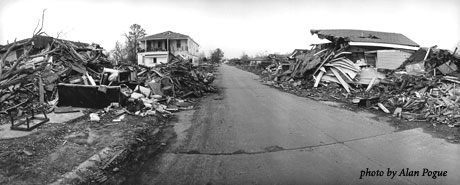
Probably a person died in there and was still inside … it’s pretty wretched. As you see in the photos, because of mold, people gutting houses have to wear Tyvec suits and respirators. The photograph on the right is from St. Bernard Parish, which is just south of the Lower Ninth Ward. I didn’t see a single standing house in St. Bernard Parish. But someone had found a very large crucifix floating somewhere and lashed in onto a metal dumpster. They had spray painted a plywood sign, “We will return.” Symbolically or not, the word “return” has almost washed away.

Hazel Mentor, who now lives in Houston and came back to survey the damage. She doesn’t think she’ll return to New Orleans. The other image on that page is a large metal barge—it’s a block long. When the water receded, the barge came to rest on top of a school bus.
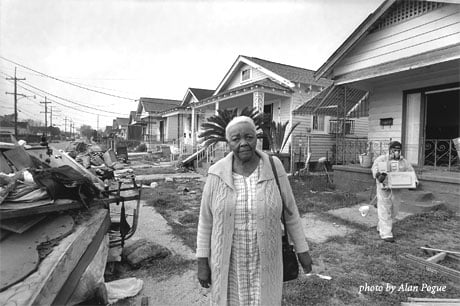
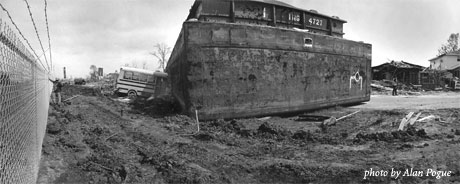
In the kitchen area, an AmeriCorps volunteer helps feed 1,500 people a day.
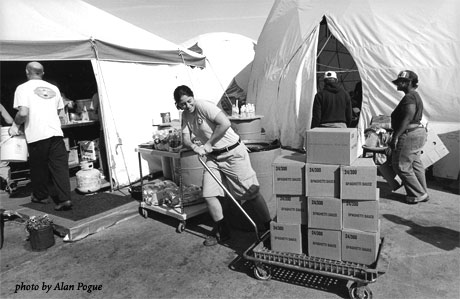
Father Jerome LeDoux at St. Augustine, in the Treme neighborhood, not far from the French Quarter. St. Augustine was founded in 1841 and is one of the oldest African American Catholic churches in the United States. After Katrina hit, the diocese planned to consolidate it with a neighboring church. Considering St. Augustine’s rich history, this was unthinkable to parishioners. After I left, there was a sit-in and parishioners eventually managed to stave off the takeover of their church.
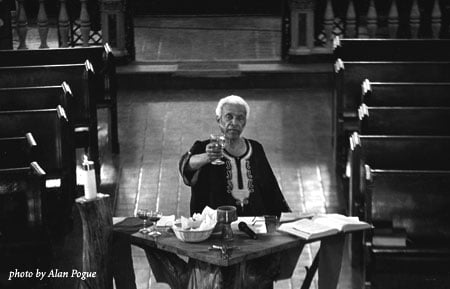
I went with a volunteer to a three-story brick school in the Lower Ninth Ward. Common Ground Collective was working on cleaning the school, and one of the fellows said, “Come on up and look at the second floor and look at the blackboard.” This was the tallest structure in the area, so a lot of people took shelter in the building. Before they left, they wrote on the blackboard that they had been stranded there.



